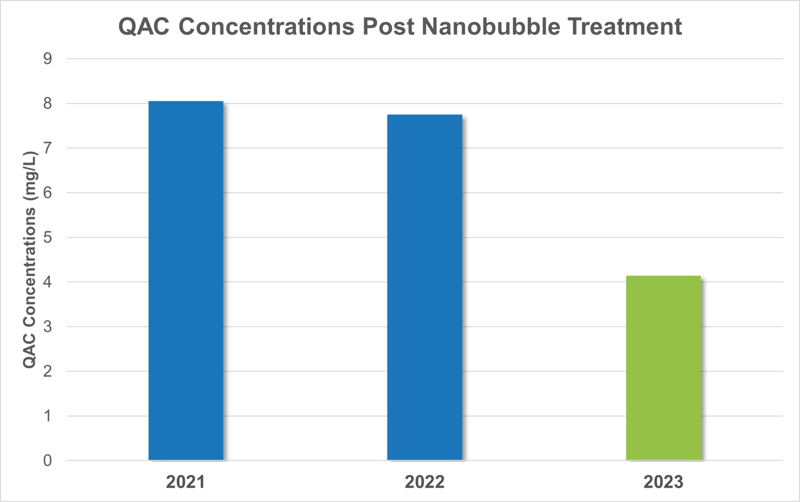Challenge
Meister Cheese, a family-owned and operated, private-label, cheese manufacturing company founded over 100 years ago in Wisconsin, focuses on sustainable practices, including treating their own wastewater in an anaerobic digester. By treating the wastewater produced by their plant, they can return the water back to the earth as clean water, helping to replenish the local groundwater. Their anaerobic digester produces methane gas (often referred to as biogas), which they use to produce energy that powers their plant and goes back to the power grid.
Due to food safety standards and rigorous Clean in Place (CIP) procedures, cheese manufacturing wastewater has high concentrations of antimicrobial compounds. These compounds, classified as surfactants or tensides, inhibit the proper operation of wastewater treatment processes, which use bacteria to remove contaminants and recover resources like biogas.
Meister struggled to maintain the health of their anaerobic digester and because of this, they ended up sending greater amounts of untreated waste to their downstream process. The results were an overloaded plant and difficult operation and maintenance. Their only option was to either reduce the amount of cheese being produced or haul away high-strength waste at a significant cost.
Solution
Meister turned to Moleaer’s nanobubble technology which uses air and water to generate in-situ clean chemistry and selectively removes inhibitory compounds. In fall of 2022, they installed Moleaer’s L1 model nanobubble generator to recirculate on their anaerobic digester and a second Moleaer L1 to recirculate on their lift station prior to the anaerobic digester. They saw improved overall anaerobic digester health by introducing nanobubbles that reduced surfactants in the anaerobic digester from inhibitory levels to non-detectable. This allowed Meister to increase the conversion of chemical oxygen demand (COD) to biogas in the anaerobic digester, increase cogeneration uptime, and reduce the need to haul high-strength wastewater out of the facility to be treated offsite.
Compared to the previous year, during the most toxic conditions when hauling waste was required, gas production increased by 98%. The average increase over the entire testing period was 20% and around 30% increase in cubic feet of biogas produced per pound of COD destroyed. In 2022 alone, they hauled 3 million gallons (11,350 m3) of waste and after the nanobubble installation, they were able to reduce this down to 12,000 gallons (45 m3).
![]()
Results
From increased alkalinity, they reduced the need for supplemental magnesium hydroxide. They were also able to improve the settleability of the activated sludge process, increasing their secondary clarifier capacity.
To their surprise, Moleaer’s technology provided such a beneficial solution to their problems that Meister was even able to increase cheese production and avoid around $10 million in CAPEX improvements for their wastewater plant expansion.
- < 30-day payback period via savings from high-strength waste hauling
- Double cheese production without additional wastewater CAPEX improvements
- $10 million savings in avoided CAPEX improvements to wastewater treatment
- 20% increase in biogas production
- 30% increase in volume of biogas produced per pound (kg) of COD destroyed
- 21% increase in cogeneration uptime


-
NanoShield model L nanobubble generator
Xylem’s NanoShield model L nanobubble generator by Moleaer is designed for higher-flow applications. The model L has four different configurations for...
